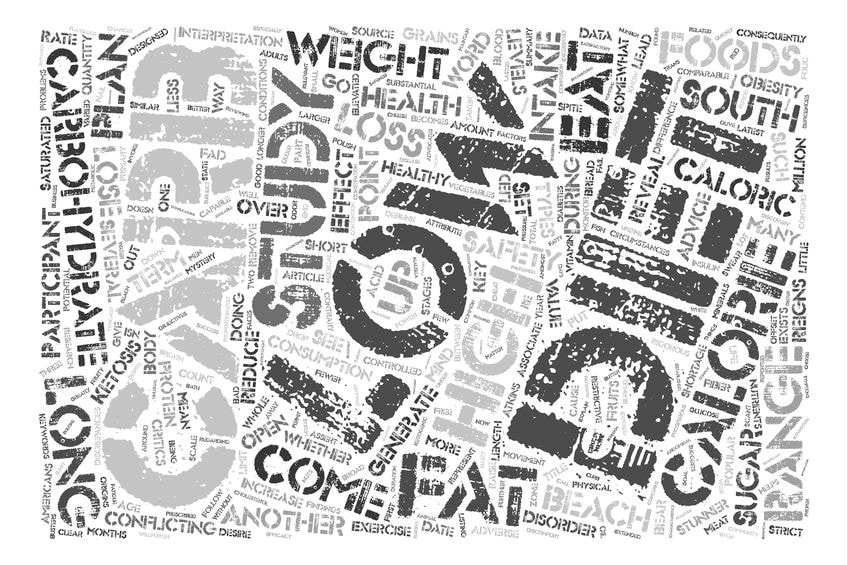Keto, Whole30, Paleo. Even if you haven’t tried them, you definitely know the names—these are the trending eating styles engineered to make us stronger, leaner, hyperfocused, and more energized. Each is founded on an element of science and boasts an enthusiastic fan club raving testimonials all over social media. As a result, these programs are pretty enticing. “People want more control over their health, and they know they have the ability to manipulate their well-being by eating certain kinds of foods,” says Robert Graham, M.D., the cofounder of Fresh Med NYC, an integrative health practice.
The club aspect also makes modern dieting attractive: Friends embark on the plans together, swap tips and tailored recipes, and even bond over the discipline required of, say, the mono diet, in which you eat only one type of food. (Although you should def not diet with your roommate.) So it’s no wonder why fit women are diet hopping—experimenting with several, or all, of these eating routines in the quest for adventure, a challenge, and of course results.
While individual diets may have real merit, experts like Dr. Graham say that constantly changing your food formulas can have serious consequences if you do it too much or too often. “Your body needs a consistent, well-designed eating plan to stay healthy and not wreak havoc on your gut and metabolism,” he says. (Another option: the 80/20 diet, which lets you eat pizza, yay!) Here’s what to watch out for on these diets—plus the smart, expert-backed strategies that will help you stay healthy, fueled, and fit on any eating plan.
There are gaping holes.
The main concern with a diet that calls for eliminating entire food groups is that you’re missing out on the key nutrients in those foods,” says Kristine Clark, Ph.D., R.D.N., the director of sports nutrition at Penn State University. (If you look at the most popular diets in America, you can see that we’re pretty extreme with our eating.) Take keto, a super- low-carb, high-fat diet: If you reduce your carb intake by skipping grains, fruits, and vegetables, you’ll fall short on fiber, antioxidants, and possibly vitamins like A and C, she explains. And even if you switch quickly between diets, you’re still not safe from shortfalls. “In just three days without certain nutrients like vitamin C you can develop symptoms of deficiency diseases like scurvy,” Clark says. “So it’s essential to have a plan for filling in the gaps.”
The fix: Before trying a diet, see which foods are off-limits, then find alternative sources for their nutrients. For low-dairy diets like Whole30, for example, swap in bone broth or leafy greens. (And, honestly, elimination diet probably won’t help you lose weight.)
Your metabolism suffers.
When you jump from one diet to another, your daily intake can start to swing. Even if you stick with one diet for months, many of the most popular plans don’t call for calorie counting, so you could end up consuming 2,000 calories one week and 1,200 the next without realizing it. That fluctuation is a problem, Dr. Graham says: “If your energy consumption isn’t consistent, it can slow down your metabolism, so you end up gaining weight.” It can also mess with your hunger cues, leaving you irritable, exhausted, and hungry. (BTW, there’s actually a crazy link between your mood and metabolism.)
The fix: Spend the first few days of a new diet tracking your calories to make sure you’re staying in a healthy range for you—for a 140-pound, 5’4″ woman, that’s 1,700 to 2,400 calories a day, depending on your activity level. If possible, eat four to six smaller meals throughout the day to keep your metabolism steady and your hunger in check, Dr. Graham says.
Transition becomes your constant body state.
“Your gut and metabolism take about three weeks to adjust to new foods,” Dr. Graham says. If you’re trying a new diet every month, your body is constantly playing catch-up, and that can be hard on your system.
The fix: Stay on a plan for at least three weeks, then evaluate how you feel. If you decide to quit, don’t switch right to a diet that’s the polar opposite (for example, meat-heavy keto to carby veganism). A sudden change in carb, protein, fat, or fiber intake can cause GI discomfort or energy-draining blood sugar swings.
Reintroducing a food group also requires care. “After half a year without a food, the stomach’s production of digestive enzymes may change, making it difficult for you to process a food,” Clark says. Eat only small portions at first. If you experience GI symptoms or hives, see an allergist to find out if you have a food sensitivity.
